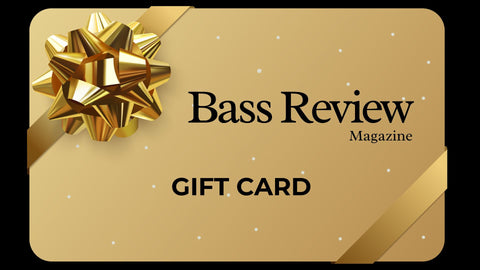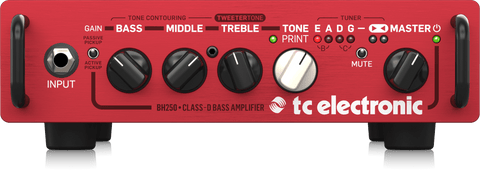
Bass amplification has evolved massively over the last quarter century. From heavy tube stacks to featherweight Class D powerhouses, modern bass amps offer more volume, clarity, and tonal flexibility than ever before. In this definitive guide, we break down the Top 25 Best-Selling Bass Amps of the Last 25 Years, revealing the amps that dominated stages, studios, and practice rooms from 2000 to 2025.
Whether you're a beginner, a gigging bassist, or a touring pro, this list showcases the amps that shaped modern bass tone across every genre.
Why Bass Amps Have Changed Dramatically in the Last 25 Years
Between 2000 and 2025, bass amplification underwent a revolution driven by five major trends:
1. The rise of Class D power
Lightweight amps replaced 50-pound racks and tube heads, allowing players to carry 500–1000 watts in one hand without sacrificing volume.
2. Modeling and digital preamps
Amps began to incorporate modeling and digital preamps, offering multiple amp voices, cabinet simulations, and built-in effects in compact formats.
3. Neo speakers and lightweight cabinets
Neodymium speakers reduced cabinet weight while maintaining output, reshaping what a “gig-ready” rig looks like for working bassists.
4. The “small-but-mighty” combo amp boom
Practice amps and small combos improved dramatically, making it easier for players to get great tone at home, in rehearsals, and at small gigs.
5. Pro-level DI and recording tools built into amps
More bassists began running their amps directly to front-of-house or recording interfaces, turning the amp into a complete tone and routing hub.
How We Determined the “Best-Selling” Bass Amps
To create this ranking, we combined:
- 25 years of retail best-seller data and trends
- Manufacturer sales history and long-running models
- Popularity in professional touring circles
- Adoption by students, amateurs, and teaching studios
- Longevity and reissue cycles
- Presence on stages and in genre-defining recordings
The amps below are not short-lived, hyped models. They are proven, long-term best-sellers that made a real impact on how bassists play and sound.
The Top 25 Best-Selling Bass Amps of the Last 25 Years
Here are the bass amps that defined modern tone from 2000 to 2025.
#1. Ampeg SVT-CL (Classic)
The king of bass amps — and the most iconic tube head ever made.
Key Features
- 300 watts of all-tube power
- Legendary Ampeg growl and punch
- Tour-grade build and reliability
Why It Sold So Well
For over 50 years, the SVT has remained the standard for rock, metal, and punk. Even in the digital age, nothing quite matches its authority, headroom, and sheer physical presence on stage.
Best For
- Rock, punk, and metal
- Touring professionals
- Players who want classic tube tone and feel
#2. Fender Rumble 500
A lightweight workhorse combo that took over stages and rehearsal rooms worldwide.
Key Features
- 500-watt Class D power section
- Dual 10" speakers in a portable combo
- Vintage/modern voicings with overdrive and contour options
Why It Sold So Well
The Rumble series became one of the best-selling bass amp lines on the planet by combining affordability, portability, and impressive volume. For many players, the Rumble 500 is the perfect “do-it-all” combo.
Best For
- Beginners and intermediate players
- Gigging in clubs and small venues
- Pop, blues, indie, rock
#3. Ampeg BA-115 / RB-115 (Rocket Bass)
A classic 15" combo that has anchored countless practice rooms and stages.
Key Features
- Single 15" speaker for deep lows
- Ampeg preamp voicing with vintage character
- AUX-in and headphone out for practice
Why It Sold So Well
Affordable, punchy, and familiar, the BA-115 and its Rocket Bass successors offer that unmistakable Ampeg vibe in a combo format. It’s a favorite for schools, practice spaces, and working bands.
Best For
- Practice and rehearsal
- Small gigs and jam sessions
- Students and beginners who want a real amp feel
#4. Markbass Little Mark III
The amp that helped launch the lightweight head revolution.
Key Features
- 500 watts of Class D power
- Famous VLE and VPF tone-shaping filters
- Ultra-portable, gig-bag-friendly design
Why It Sold So Well
The Little Mark III quickly became a favorite among gigging bassists who wanted big tone without a heavy rack. Its fast attack and punchy mids made it a staple in jazz, funk, and pop.
Best For
- Touring and gigging bassists
- Slap, funk, and fusion
- Players who value portability and clarity
#5. Aguilar Tone Hammer 500
Studio-quality warmth in a portable Class D head.
Key Features
- 500 watts of power
- Aguilar Tone Hammer preamp with sweepable midrange
- Warm, tube-like response
Why It Sold So Well
The Tone Hammer 500 captured the warmth and musicality Aguilar is known for, but in a gig-friendly, lightweight package. It’s beloved by pros who want rich mids and a responsive feel under the fingers.
Best For
- Rock, funk, R&B, and worship
- Players who prioritize warm, musical mids over ultra-clean hi-fi
#6. Orange Terror Bass
Iconic Orange aggression in a compact hybrid head.
Key Features
- Tube preamp with Class D power
- Classic Orange growl and grit
- Compact metal chassis built for the road
Why It Sold So Well
The Terror Bass brought the thick, snarling Orange character into a portable format that appealed to rock, punk, and alternative players worldwide.
Best For
- Rock, punk, and alternative
- Players who want aggressive midrange and grind
#7. Gallien-Krueger 700RB-II
A touring staple with punchy, modern “GK growl.”
Key Features
- Bi-amp system for horn and woofer control
- Tight, quick response with strong mid presence
- Road-tested reliability
Why It Sold So Well
For two decades, the 700RB-II has been a go-to amp for players who need fast, articulate tone that cuts through dense mixes.
Best For
- Rock, fusion, and slap
- Gigging and touring bassists
#8. Ampeg Micro-VR Stack
A mini SVT rig with real Ampeg character.
Key Features
- Compact 200-watt head
- Matching 2x10" cabinet (often stacked as a mini fridge)
- Vintage styling inspired by the SVT
Why It Sold So Well
Bassists loved getting the look and vibe of a classic SVT stack in a more manageable, small-stage-friendly format. It’s perfect for smaller venues and home studios.
Best For
- Small gigs and studios
- Players who love the SVT look but don’t need stadium volume
#9. Hartke LH500
A punchy, affordable head with serious headroom.
Key Features
- 500 watts of power
- Hybrid tube preamp
- Simplified tone stack with plenty of punch
Why It Sold So Well
The LH500 offered big, loud, and clear tone at a price many players could afford, making it a staple in rehearsal spaces and on stages worldwide.
Best For
- Rock, funk, and metal
- Players who want loud, clean power on a budget
#10. Darkglass Microtubes 900
The most influential modern metal bass amp of the last decade.
Key Features
- 900 watts of Class D power
- Built-in Darkglass drive engines (often B3K/Alpha·Omega style circuits)
- Advanced DI, cabinet sim, and routing options
Why It Sold So Well
The Microtubes 900 gave modern metal and prog bassists everything they needed in a single head: clean tone, crushing drive, and studio-ready outputs.
Best For
- Metal, prog, and djent
- Touring players who need consistent, modern tone
#11. TC Electronic BG250 Combo
A versatile, lightweight combo with built-in effects.
Key Features
- Lightweight combo in various wattages
- TonePrint-enabled effects and tools
- Good balance of volume and portability
Why It Sold So Well
The BG250 series became a hit among players who wanted a combo that could handle practice, rehearsal, and smaller gigs with ease.
Best For
- Rehearsals and local gigs
- Players who like built-in effects and flexibility
#12. Mesa Subway D-800
Mesa Engineering quality in a compact, powerful head.
Key Features
- 800 watts of Class D power
- Mesa’s signature build quality and tone
- Flexible EQ and voicing controls
Why It Sold So Well
The Subway D-800 brought Mesa’s reputation for reliability and tone into the lightweight arena, making it a favorite for serious touring players.
Best For
- Touring and session bassists
- Players who want boutique tone in a modern head
#13. Behringer Ultrabass BX1200
One of the best-selling entry-level bass amps ever made.
Key Features
- 12" speaker combo
- Shape filters and built-in tone tools
- Very budget-friendly
Why It Sold So Well
With its low price and usable tone, the BX1200 introduced thousands of players to amplified bass.
Best For
- Beginners and students
- Practice rooms and starter rigs
#14. Line 6 LowDown Series
One of the first widely adopted modeling bass amp ranges.
Key Features
- Multiple amp models in a single combo
- Built-in effects
- Presets tailored for different genres
Why It Sold So Well
The LowDown series brought modeling technology to bass combo amps at a time when most players still used single-voice amps, making it very attractive to players who needed versatility.
Best For
- Cover band players
- Practicing multiple styles on one amp
#15. Phil Jones Double Four
A tiny, hi-fi combo with audiophile-level clarity.
Key Features
- Ultra-compact cabinet and drivers
- Highly detailed, studio-like tone
- Boutique build quality
Why It Sold So Well
The Double Four became a favorite among teachers, practice-focused players, and studio musicians who wanted clarity over sheer volume.
Best For
- Home practice and teaching
- Recording and low-volume gigs
#16. Eden WT-550
A warm, hi-fi head that shaped modern R&B and gospel bass tone.
Key Features
- Hybrid preamp with Eden’s signature voicing
- Musical, flexible EQ section
- Smooth, studio-like response
Why It Sold So Well
The WT-550 became a staple in gospel, R&B, and studio settings thanks to its combination of warmth, detail, and headroom.
Best For
- Gospel, R&B, and jazz
- Players who want smooth, polished tone
#17. Roland Cube Bass Series
Durable, versatile modeling combos for practice and small gigs.
Key Features
- COSM modeling with multiple amp voices
- Built-in effects and tuner on many models
- Roland’s proven durability
Why It Sold So Well
The Cube Bass series served generations of learners, teachers, and gigging players who wanted reliable combos with multiple tones on tap.
Best For
- Beginners and teaching studios
- Small gigs and rehearsals
#18. Ashdown ABM 500 EVO
British warmth and thickness with modern flexibility.
Key Features
- Powerful, warm preamp section
- Subharmonic generator for added low-end
- Strong midrange character
Why It Sold So Well
The ABM 500 EVO earned a loyal following among rock and indie players for its thick, rich tone that sits beautifully in guitar-heavy mixes.
Best For
- Rock, indie, and Brit-rock tones
- Players who like rich lows and chewy mids
#19. Gallien-Krueger MB Fusion 800
A modern hybrid head with tube warmth and Class D power.
Key Features
- Tube preamp with Class D power section
- Fast, articulate response
- Compact and lightweight
Why It Sold So Well
The MB Fusion 800 gave GK fans a way to get classic GK punch with added tube warmth, all in a small, gig-ready head.
Best For
- Modern rock and fusion
- Players who want clarity with a touch of tube character
#20. Ampeg SVT-7PRO
SVT power and tone in a lightweight, high-wattage package.
Key Features
- Tube preamp with Class D power
- Up to 1000 watts of output
- Signature Ampeg voicing
Why It Sold So Well
For players who wanted SVT-style authority without hauling a full tube head, the SVT-7PRO became a logical choice.
Best For
- Rock, metal, and touring rigs
- Players who want big headroom and classic tone
#21. Orange Crush Bass 100 Combo
A powerful, characterful combo with analog warmth.
Key Features
- 100-watt solid-state combo
- Blendable overdrive
- Three-band EQ with mid control
Why It Sold So Well
The Crush Bass 100 gave players a loud, giggable combo with that unmistakable Orange flavor, making it a hit for rehearals and club gigs.
Best For
- Rock, punk, and alternative
- Local gigging and rehearsal spaces
#22. Bugera Veyron BV1001M
Huge wattage and modern tone at a budget price.
Key Features
- High-wattage Class D power (often marketed at 2000 watts peak)
- Clean, modern preamp
- Lightweight chassis
Why It Sold So Well
The Veyron series attracted players with big power ratings and low prices, making it a popular choice for volume-hungry bassists on a budget.
Best For
- Players needing lots of headroom
- Budget-conscious gigging bassists
#23. Peavey MAX Series Combos
Rugged, reliable combos used around the world.
Key Features
- Solid-state reliability
- Strong low-end response
- Simple, usable controls
Why It Sold So Well
Peavey MAX combos became common in schools, rehearsal spaces, and home setups thanks to their durability and no-nonsense performance.
Best For
- Beginners and education settings
- Practice and small gigs
#24. Markbass CMD 102P Combo
A 2x10" combo with the heart of a Little Mark head.
Key Features
- 2x10" speakers with rear-ported cabinet
- Integrated Little Mark head
- Surprisingly loud for its size
Why It Sold So Well
The CMD 102P delivered Markbass tone in a combo package that could handle everything from rehearsals to serious gigs, especially for jazz and pop players.
Best For
- Jazz, pop, funk, and fusion
- Players who want one combo that can do almost everything
#25. Fender Bassman 100T
A modern tube head inspired by Fender’s legendary Bassman lineage.
Key Features
- 100 watts of all-tube power
- Vintage and modern voicing options
- Built-in power scaling for different venues
Why It Sold So Well
The Bassman 100T offered boutique-level tube tone with modern features and flexibility, appealing to players who wanted Fender’s classic warmth in a contemporary format.
Best For
- Vintage-flavored rock, blues, and soul
- Players who love tube compression and warmth
Bass Amp Trends From 2000–2025
2000–2008
- Hybrid amps (tube preamp with solid-state power) dominate many stages.
- Neo speakers and lighter cabs begin to replace heavy traditional cabinets.
2009–2015
- Lightweight Class D heads explode in popularity.
- Modeling starts appearing in mainstream bass combos and heads.
- Affordable combos get better preamps and more usable tone.
2016–2020
- Boutique preamp tones (Aguilar, Darkglass, Mesa) move into compact, giggable heads.
- Combos become lighter, louder, and more stage-capable.
- More amps include advanced DI and cabinet simulation.
2021–2025
- Modeling reaches pro-level reliability and sound quality.
- Tube amps enjoy a vintage revival among tone purists.
- DI-first and “amp-less” rigs become widely accepted on professional stages.
How to Choose the Right Bass Amp
1. Consider Your Playing Environment
- Home practice: 25–100 watts, small combo
- Rehearsals and small gigs: 150–300 watts
- Larger gigs and touring: 500–1000 watts or more
2. Combo vs. Head + Cab
- Combo amps – convenient, all-in-one, great for practice and small/medium gigs.
- Head and cabinet – more flexible, scalable, and often more powerful for larger stages.
3. Decide on Your Tone Priorities
- Warm and vintage: tube or hybrid amps like the SVT-CL or Bassman 100T.
- Clean and modern: Class D heads like Markbass, GK, or Aguilar.
- Maximum versatility: modeling combos and heads with multiple voices and effects.
4. Think About DI and Recording Needs
If you plan to record at home or run direct to front-of-house, look for amps with:
- Balanced XLR DI output
- Pre/post EQ options
- Cabinet simulation or IR loading (where available)
Frequently Asked Questions
Do I need a 500+ watt amp to gig?
Not always. In smaller venues or with PA support, a 200–300 watt amp and an efficient cabinet can be more than enough. Wattage is only part of the equation — speaker efficiency and cabinet design matter just as much.
Are tube amps worth it?
If you love vintage warmth, natural compression, and rich harmonic content, tube amps are absolutely worth considering. They are heavier and require more care, but many players wouldn’t trade their feel for anything.
Is Class D reliable?
Yes. Modern Class D bass amps are extremely reliable and are used by top touring artists around the world. They offer high power in a lightweight format.
Can I gig with just a DI and no amp?
Many bassists do. With a good preamp or DI pedal and strong PA support, you can play shows without a traditional amp. However, many players still prefer a cabinet on stage for feel and personal monitoring.
What's Next?
The last 25 years have produced some of the most influential and best-selling bass amps ever made. From the iconic Ampeg SVT to cutting-edge Class D powerhouses, these amps have shaped the sound of modern bass across every genre.
Whether you're chasing vintage tube warmth, crystal-clear modern tone, or a lightweight gigging solution, the best-selling bass amps of the last 25 years offer proven options for every kind of player. Pick the one that matches your style, your venues, and your budget — Check out the Bass Review Magazine App for the latest Bass Guitar Amp Reviews!







